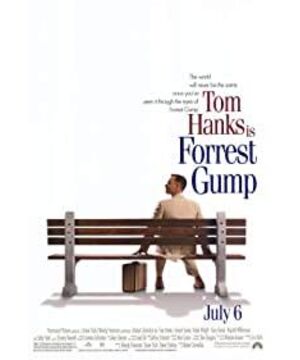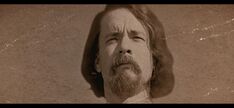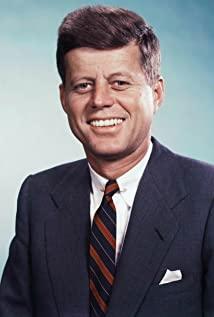A feather fell slowly, across the shoulders of speeding vehicles and pedestrians, to a pair of mud-stained shoes.
Forrest Gump picked up the feather, put it in the book, sat on the bench, and talked about the American dream that belonged to Forrest Gump.
Played ball, served as a soldier, loved a vixen; carried guns, went to court, and received awards in the White House.
Some people say that Forrest Gump's IQ is not enough, and his legs are disabled.
Some people also say that Forrest Gump can always realize the dream that is hard to reach for those who are determined by the most traditional method.
Forrest Gump is too ordinary, like countless little people around him; Forrest Gump is too great, and has made achievements that ordinary people can't insist on.
This article will briefly analyze the film from the perspective of narrative structure and ideological criticism for readers.
1. Fabula/Syuzhet structure: Forrest Gump's oral connection with American history
The film takes Forrest Gump as a clue and condenses the film into a long scroll of American history and humanities. Every footprint makes history as if it is within reach.
Forrest Gump cross-witnessed the Elvis rock pop world, segregation and the black civil rights movement, the Vietnam War and anti-Vietnam War, sexual liberation, rock and hippie movements, the policies of successive presidents, and more.
Let's talk about the Fabula/Syuzhet structure used in "Forrest Gump" :
This structure has Russian origins, and is derived from Russian formalist terms used in narratology to describe narrative structure.
Fabula is the stuff that makes up the story, and Syuzhet is the narrative and how the story is organized.
The event fabula of the story itself is independent of its narrative syuzhet.
The specific structure used in American films tends to reveal the ending first and then explore how the story got there.
Representative works: "Fight Club", "American Beauty", "Forrest Gump" and "Citizen Kane".
[narrative structure] "Forrest Gump" begins with Forrest Gump waiting for the bus and talking to passers-by at the end of the story.
Fabula, who learns the story of his life through recollections of conversations with passersby, and the scene of chatting at a bus stop represents the narrative Syuzhet.
If this were a classic three-act structure, it would start with little Forrest Gump, and then advance the story to him waiting at the bus stop.
This loses the naturalness and appropriateness of the narration, and also loses the personal connection to the destiny of the American Dream.
Moreover, the time and space of the story cannot be unfolded and switched so smoothly.
If you feel the need to add narration to your script, one of the best ways to do it is to write it in a Fabula/Syuzhet structure.
It is used as an extension to analyze the narrative structure of multiple foreign versions organized by Big Cats of the Film and Television Industry Network:
Three-Act Structure
Namely Hollywood classic structure, establishment, conflict, ending. Or: lay out, create opposition, and solve problems.
The three-act structure is the most basic and purest structure that most films follow.
Representative works: "Star Wars", "Raiders of the Lost Ark", "Die Hard" and most other works.
Multiple TimelineStructure
The cause and effect of one story have no effect on other stories, and the only connections are common themes, emotions, and messages.
This is one of the most complex structures, a story that mixes multiple timelines.
The magic of this structure is that it allows the audience to feel the subtlety of how everything is connected to each other.
Representative works: "The Same Party and Fight Against Differences", "Cloud Atlas", "The Godfather 2" and so on.
"The Godfather 2" has the highest drama achievement and the most difficult narrative in the trilogy. It tells the story of how two generations of godfathers, father and son, fought against the times and defended the family. Father and Son are two parallel threads that are independent of each other, but share a common theme.
The old godfather was forced to go to the mafia to protect his family, and the new godfather was forced to go to the mafia to protect the old godfather.
Times have changed. In order to fight against the times, the two generations of godfathers were forced to rise in order to protect the family and take responsibility.
Whether or not you're linking multiple timeline stories together, this structure gives screenwriters a way to go beyond traditional narrative.
Hyperlink Structure
The key to linking stories is that ultimately each story and character affects other stories and characters.
If a storyline or character is removed, the main storyline will also collapse.
A screenplay like this is more appealing to readers because they will want to know how all these stories and characters are connected.
Representative works: Paul Thomas Anderson, "Magnolia".
Reverse Chronological Structure
Sequential storytelling from end to end , stripped-down exposing how life becomes life and how we become us.
Representative work: "Mints" directed by Lee Chang-dong.
Circular Structure
This structure again uses the fabula/syuzhet structure.
The way Syuzhet is narrated here is more like a Mobius ring, a dragon that devours its own tail.
Time travel stories are the most prominent cyclically structured narratives, exploiting the cyclical aspect of the narrative in the most direct way.
Representative work: Bi Gan's "Roadside Picnic".
Non-Linear Structure
Such stories are not presented in chronological order, and the narrative does not follow a causal pattern like a three-act structure.
The non-linear story is very jumpy in time, going back and forth at different points in time.
It's a challenge for readers and viewers alike, they have to be able to connect specific scenes and storylines.
Representative works: "Pulp Fiction", "Reservoir Dogs", "Dunkirk".
Real-Time Structure
The story is told in an uninterrupted time stream, where the causality of any conflicts the characters face are presented in real time.
This type of script can be tricky in this regard, so you usually have to find a way to drive your character's actions and motivations.
A "tight time" might be the best way to do it.
Representative works: "Twelve Angry Men", "Closer" and "Noon".
2. Ideological Criticism, The Age of Telling Myths
In her "Film Criticism", teacher Dai Jinhua took "Forrest Gump" as an example in the ideological criticism unit.
Here it is necessary to clarify the concept of ideology .
In the popular conceptual understanding, ideology is considered to be preaching and lying, that is, the part that is recognized.
Indeed, on the contrary, ideology is a system of expression of values, a system of common sense recognized and shared by the majority.
When ideology works effectively it is invisible, and once identified, it declares ideology invalid and terminated.
This brings us back to the ideological state machine theory of the structuralist Marxist theorist Louis Althusser .
In 1969, he published "The State Apparatus and the Ideological State Apparatus," which stated:
Religion, education, family, law, trade unions, culture and mass media are "ideological state machines".
Its function is to instill the dominant ideology into the individual, so that the individual accepts the existing social norms and social structure.
Accepting social roles "voluntarily" within the system of production relations, forcing individuals to obey existing social relations in a non-force or non-coercive manner.
In layman's terms, ideologies are everywhere and repeat themselves in places where we don't even notice them.
Ideology is not a lie, but with the help of a large number of "truthful expressions", it achieves the effect of lying.
Ideology succeeds in providing an imaginary picture of society in which the successful and the marginalized are placed in sequence .
To master the method of ideological criticism is to learn to look for the unseen behind the seen, and to find the blank space in the text full of words.
Ideological film theory emphasizes that film, as a means of expression, belongs to the ideological superstructure .
Regardless of the production mechanism of the film, the content and form of the film's performance , as well as the basic device of the film, it has an ideological nature.
Cinema is both subject to the state ideological apparatus and reproduces this ideology.
The task of ideological film criticism is to destroy and oppose the "complicity" of film and "dominant ideology".
Likewise, criticizing the ideology conveyed by the film means denying the "authenticity" that the film advertises.
"Forrest Gump" is a typical film that promotes the mainstream values of the American right and devalues the free thought of the left.
Here we must insert the knowledge points of the American left and right.
Usually, there are left and right in every country, generally speaking, the left represents revolution and progress, and the right represents backward and conservative.
Leftists and rightists are like the left and right legs of a country, right or wrong.
Forrest Gump was born in Alabama, the southernmost state of the United States, and is a typical southern conservative thought source.
Believing in God, believing in tradition, cherishing love, and valuing family are the ultimate values of conservatism.
Southern spiritual belief in God, preaching love and loyalty, against abortion, in fact homosexuality, and even racism.
The right wing represents the most primitive American spirit of the past in the United States and tends to be conservative, so it is called the right wing.
In the north of the United States, it is full of radical leftists who advocate revolution, pursue liberation, and break everything .
Leftists yearn for true equality, freedom, and want to break all the shackles and shackles that bind humanity.
Religion, marriage, family, society, and country are all objects of their resistance.
The left supports the liberal Democrats and the right supports the conservative Republicans.
Forrest Gump inherited the rightist values of believing in God and cherishing family from his mother.
And his love of Jenny in his life, the pursuit of freedom, anti-god, anti-war, anti-social, sexual liberation, is a typical leftist.
In the film, the right-wing Forrest Gump becomes a winner in life, while the left-wing Jenny is presented as a tragedy.
In the end, after experiencing rebelliousness, the sunken Jenny finally found a home in Forrest Gump and returned to Alabama.
A radically rebellious left finally chose a right-style return, which greatly promoted the spirit of the right (except for racism).
But is Forrest Gump so successful and politically correct just because of that?
Forrest Gump's ancestor, General Forrest (Forrest), is actually a typical 3K party and a racist.
Forrest Gump, a descendant of a racist, has a life-and-death relationship with Bubba, a black man.
Forrest Gump, a not-so-smart child, is like a gentle reconciler, quietly bridging the pain in the hearts of Americans since World War II.
During the riots in Tusca, Alabama, the governor openly prevented blacks from enrolling in school, but Forrest broke into history to help black students pick up books from the ground.
During the Vietnam War, Forrest Gump and others were described as escapees who did not attack the Vietnamese but were defeated by the guerrillas.
As soon as Forrest Gump returned from the Vietnam War and was honored as a Vietnam War hero, he turned around and joined the anti-war parade.
At the time of the Cold War between China and the United States, Forrest Gump became a table tennis champion and was ordered to carry out the diplomatic activities of "small ball to big ball".
During the Vietnam War, Lieutenant Dan, a staunch fighter, achieved self-reconciliation with the help of Forrest Gump.
Lieutenant Dan, who has absolutely no faith, began to go to church services, and finally found an Asian (Vietnamese) daughter-in-law when he got married.
Every American who was shrouded in historical pain felt heartfelt gratification and moved after leaving the cinema.
But in fact, can the Vietnam War really be reconciled? Is America innocent and just? Does racism exist?
The film whitewashes the historical stand on the values of the white American right.
The real history is like the microphone that Forrest Gump stood on the Vietnam War Commendation Stage, which was "aphasia" in an instant.
Althusser also has an important concept called " structural void ": that is, the part of a text that is completely concealed and hidden.
The film intentionally stuffs the history of the American women's liberation movement and the black civil rights movement into the structural blank.
The Washington Monument pool where Jenny and Forrest Gump reunited was the climax of the Black Civil Rights Movement, the "March Like Washington" event.
Martin Luther King Jr. delivered his famous "I Have a Dream" speech at the 200,000-person peaceful civil rights rally.
However, black leaders such as Martin Luther King Jr. and Malcolm were all removed in the process of subjective rewriting of history, only to be seen in the room of the Black Panther Party, and then pay attention to the behavior of the woman who was beaten very quickly. attracted.
This has to be said to be a subtle "smear" of the black civil rights movement and the women's liberation movement.
This cultural reconciliation promoted by Forrest Gump's secular mythology is invisibly alienated in the conceptual expression of the "American Dream".
When Bubba's mother turned over to be the master and hired white people as babysitters, it seemed like a powerful statement of the American dream: racism didn't seem to exist, and struggle brought success.
The positions of women and blacks were completely erased, and the woman Jenny had to show herself in the image of finally returning to the family after the catastrophe. With the help of the white Forrest Gump, the descendants of the black Bubba changed their fate.
The authority and kinship of the white patriarchy were strengthened and restored again, and the individualistic struggle of the American Dream was recited over and over again.
Foucault famously said: It is the age of the myth that is important, not the age of the myth.
Obviously, this is not the United States in the 1950s and 1980s, but the reality of the surging trend of social conservatism in the United States in the 1990s.
"Forrest Gump has created a universal public discourse and public memory, strengthened the hegemony of mainstream ideology, realized imaginative solutions to social problems, made the audience reaffirm traditional morality and social mainstream, and denied avant-garde new Culture. This responds to the 'calling' of the mainstream ideology to their subject identity construction, and agrees with Forrest Gump's subject identity construction." - "Hollywood Movies, Historical Memory, and Historical Reconstruction -" in "Forrest Gump" 〉As a case study〉》Professor Xie Wenyu
And what is the strong support for this reconstruction of history?
The answer is technical packaging handling .
In fact, the film uses a lot of digital technology to add Forrest Gump to the documentary screen of real events. This technical processing of tampering with history,
The audience completely lost the ability to distinguish between reality and grafting, and organically stitched Forrest Gump into historical memory.
And "Forrest Gump" is such a movie that reconstructs history and tells mythology.
Once it becomes a consensus and widely circulated, it becomes a collective discourse , engraved in the audience's mind, and repairs the painful memory.
But even if you succeed in seeing through the film’s rewriting of American history, the film still uses text to hide the narrative .
The low-minded Forrest Gump's historical memory is not very reliable, and Jenny has become an example of self-destruction because of the memory of childhood trauma.
At the end of the film, Forrest Gump destroys Jenny's old home, builds a new one, and rebuilds his full moral strength.
Forrest Gump defeated Shawshank to win the Oscar, which is not necessarily a quality surpassing. It is related to the strong right-wing atmosphere of the Oscars at that time.
A movie, a business legend, it is in the restoration and reconstruction of historical amnestics that a successful speech on ideological ventriloquism is completed.
View more about Forrest Gump reviews










